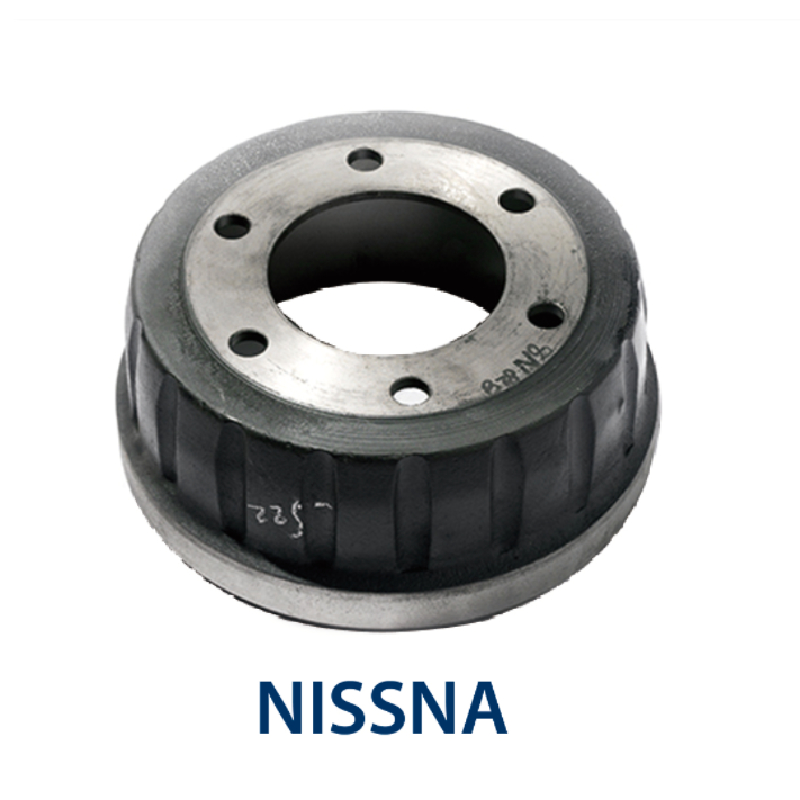dec . 09, 2024 18:03 Back to list
Analyzing Patterns of Brake Drum Wear for Enhanced Vehicle Performance and Safety
Understanding Brake Drum Wear Patterns
Brake drums are a crucial component of a vehicle's braking system, particularly in older vehicles and certain heavy-duty applications. They work in conjunction with brake shoes to create friction, which slows or stops the vehicle. Over time, brake drums can exhibit various wear patterns, which provide important insights into the health of the braking system. Understanding these patterns can help in diagnosing issues, maintaining safety, and prolonging the lifespan of brake components.
Types of Wear Patterns
1. Uniform Wear Uniform wear is the ideal scenario, where the contact surface of the brake drum wears evenly. This typically indicates that the brake system is functioning correctly, with a proper adjustment of the brake shoes and appropriate brake fluid levels. Uniform wear promotes consistent braking performance, reducing the risk of vibrations or noise during braking.
2. Concentric Wear Concentric wear can occur when the brake shoes do not make full contact with the drum surface. This can lead to a situation where the outer edges of the drum are worn more than the inner section. Concentric wear often suggests that the brake shoes are not adjusted properly or that there may be contamination on the braking surface, such as grease or oil. This type of wear can result in reduced braking efficiency and may cause the vehicle to pull to one side during braking.
3. Scalloping This wear pattern is characterized by a series of grooves or notches on the drum surface. Scalloping often indicates that the brake shoes are not making uniform contact across the drum's surface. This could be caused by improper fitment or poor quality brake components. The presence of scalloping can lead to a pulsating brake feel, which can be dangerous, especially at higher speeds.
4. Hot Spotting Hot spotting occurs when certain areas of the brake drum overheat, resulting in localized wear or distortion of the drum material. This can happen if the brakes are used heavily, leading to excessive friction and heat generation. The symptoms of hot spotting may include a burning smell, vibration during braking, or a decrease in braking performance. Persistent hot spotting can cause the drum to warp, necessitating replacement.
5. Cracks and Fractures Severe wear can lead to cracks or fractures in the brake drum. This typically occurs in drums that have been overheated due to excessive use or a malfunction in the braking system. Cracks can significantly compromise the structural integrity of the drum, leading to catastrophic brake failure if not addressed promptly. Regular inspection is essential to catch these issues before they become critical.
brake drum wear patterns

Factors Contributing to Brake Drum Wear
Several factors contribute to the wear patterns observed in brake drums
- Driving Habits Aggressive driving, frequent hard braking, and overloading the vehicle can accelerate brake wear. Smooth driving can extend the lifespan of brake components.
- Brake Component Quality The quality of brake shoes, drums, and associated components significantly affects wear patterns. Using high-quality parts can lead to better performance and reduced wear.
- Maintenance Practices Regular brake inspections, adjustments, and maintenance can prevent premature wear. Ignoring signs of wear, such as noise or reduced braking power, can lead to more severe issues over time.
- Environmental Conditions Exposure to road salt, moisture, or debris can affect brake performance and longevity. Ensuring that brakes are clean and free from contaminants is crucial.
Conclusion
Understanding brake drum wear patterns is essential for maintaining a safe and efficient vehicle. By recognizing the different types of wear and their causes, drivers can take actionable steps to ensure their braking system remains in optimal condition. Regular inspections, proper adjustments, and attention to driving habits can all contribute to prolonging the lifespan of brake components. Ultimately, a well-maintained braking system not only enhances safety but also ensures a smoother and more reliable driving experience.
-
Volvo Brake Drum: OEM Quality, Optimal Safety
NewsAug.27,2025
-
Durable Brake Drum MAZ for Heavy Duty Trucks | High Performance
NewsAug.26,2025
-
FUWA: Premium Quality, Reliable Performance & Innovative Solutions
NewsAug.25,2025
-
Liza Brake Drum: Superior Quality & Performance for Safe Driving
NewsAug.24,2025
-
Iveco Brake Drum | Premium OE Quality for Daily & Eurocargo
NewsAug.22,2025
-
Your Brake Drum Man: Quality & Performance Parts
NewsAug.21,2025
